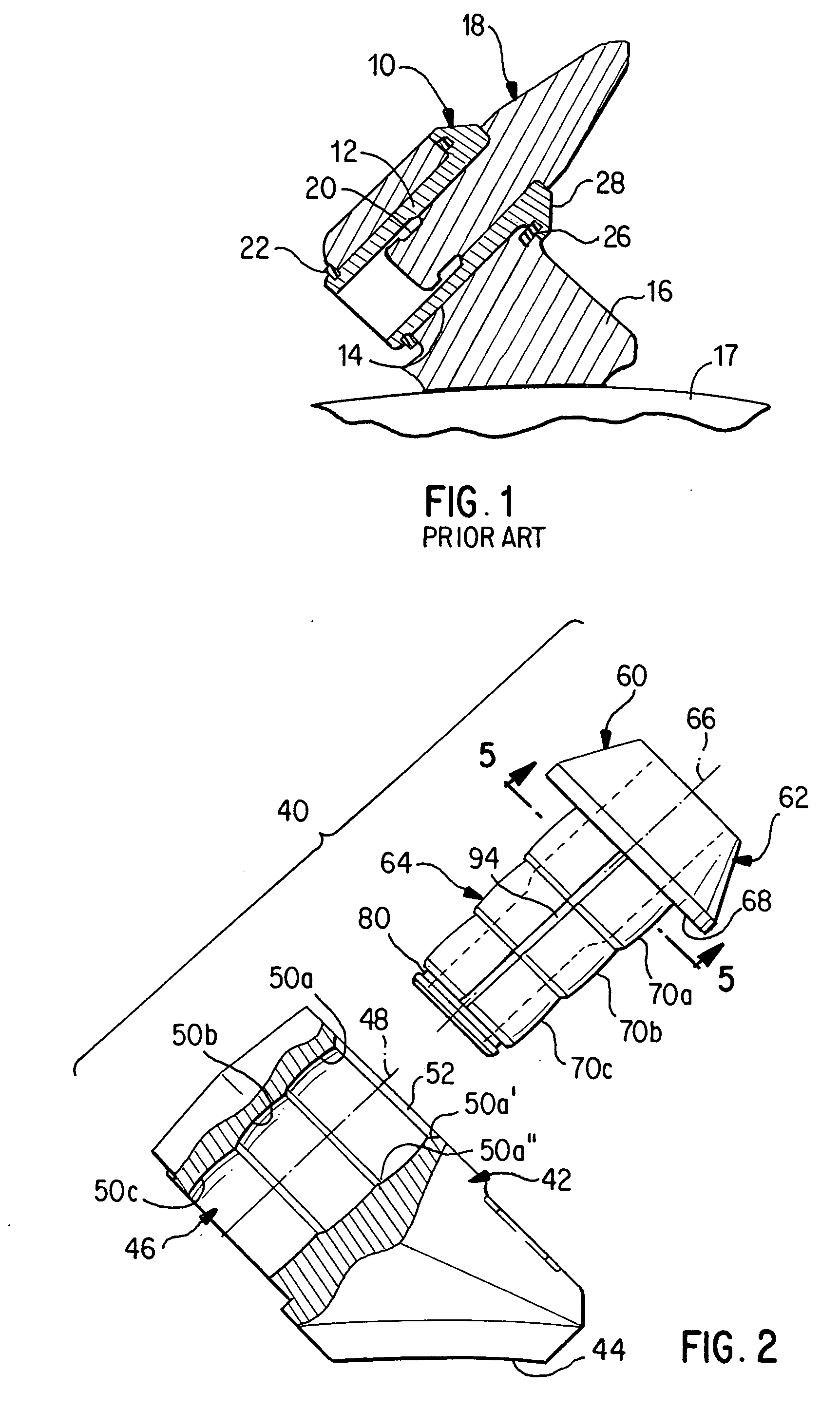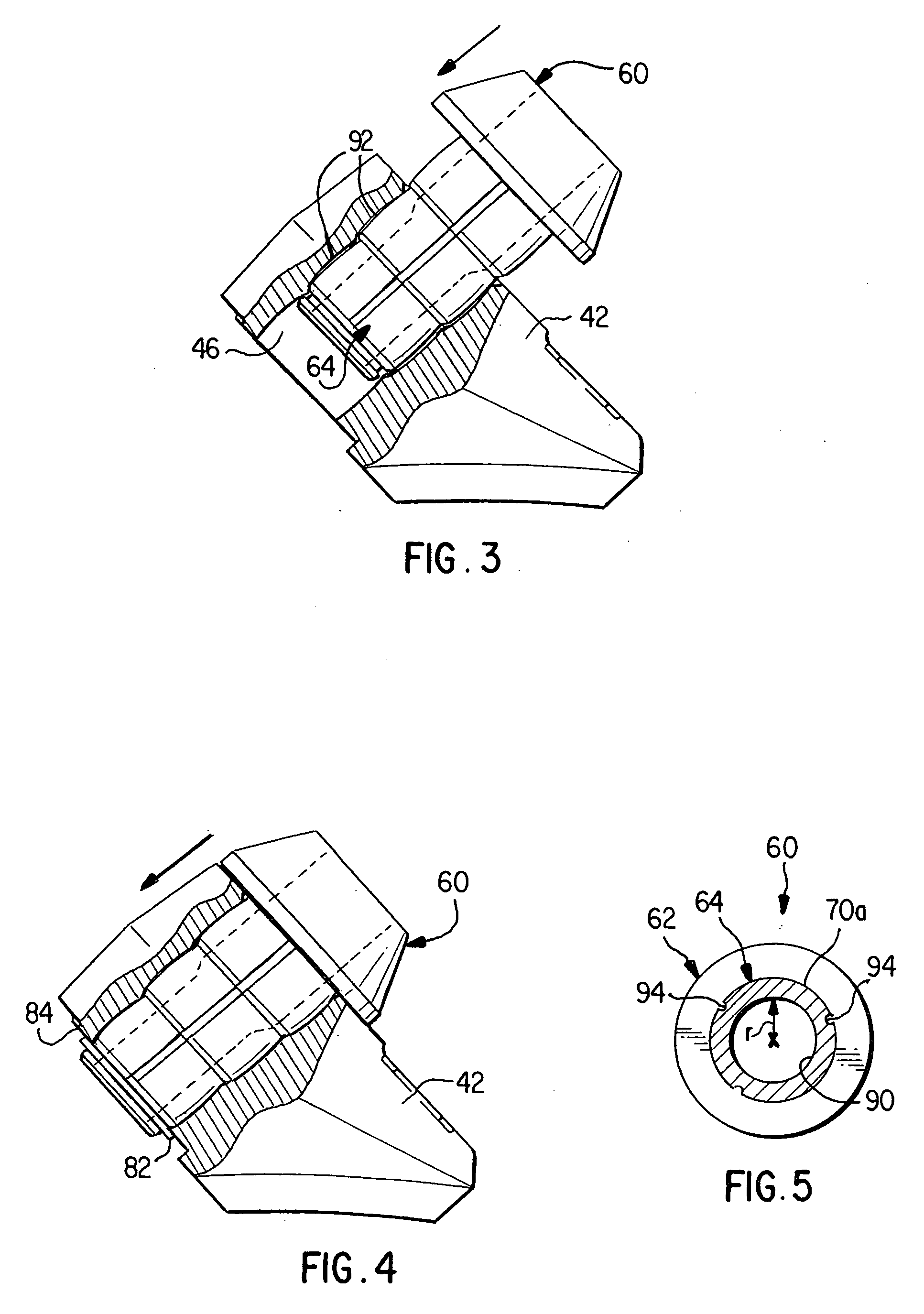Tool holder block and sleeve retained therein by interference fit
a technology of interference fit and holder block, which is applied in the field of cutting bit holders, can solve the problems of holder block wear, bit wear, and area of holder block that surrounds the bit-receiving hole wear, and achieve the effect of interference fi
- Summary
- Abstract
- Description
- Claims
- Application Information
AI Technical Summary
Benefits of technology
Problems solved by technology
Method used
Image
Examples
Embodiment Construction
[0021] Depicted in FIGS. 2-5 is a holder assembly adapted to mount a rotary cutter bit on any suitable carrier, such as a rotary drum, an endless chain (e.g., trench digger) or even a non-rotatable carrier. The holder assembly includes a holder block 42 having a curved surface 44 configured for engaging the outer periphery of a rotary drum. The block includes an open ended through-hole 46 which defines a longitudinal center axis 48. The hole 46 includes an inner surface of stepped configuration, wherein the surface includes a plurality of longitudinally adjacent surface sections 50a, 50b, and 50c, which become successively smaller in cross-section in a direction away from a front mouth 52 of the hole 46. Each of the surface sections 50a-c has longitudinally spaced front and rear ends, e.g., see the front and rear ends 50a′, 50a″ of the surface section 50a in FIG. 2, and corresponding front and rear ends 50b′, 50b″, 50c′, 50c″ of the other surface sections 50b, 50c.
[0022] The surfac...
PUM
 Login to View More
Login to View More Abstract
Description
Claims
Application Information
 Login to View More
Login to View More - R&D
- Intellectual Property
- Life Sciences
- Materials
- Tech Scout
- Unparalleled Data Quality
- Higher Quality Content
- 60% Fewer Hallucinations
Browse by: Latest US Patents, China's latest patents, Technical Efficacy Thesaurus, Application Domain, Technology Topic, Popular Technical Reports.
© 2025 PatSnap. All rights reserved.Legal|Privacy policy|Modern Slavery Act Transparency Statement|Sitemap|About US| Contact US: help@patsnap.com



